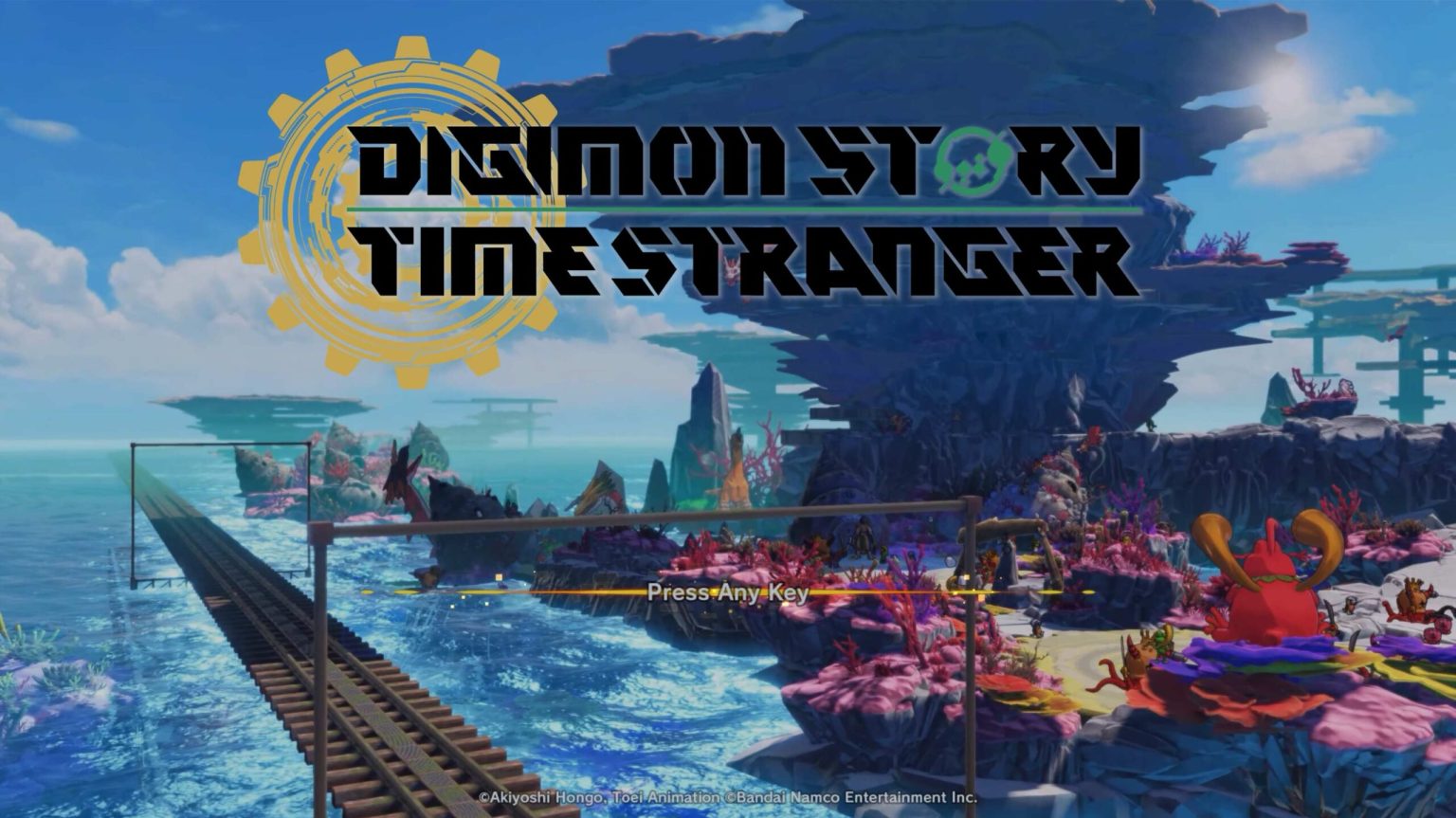Digimon Story: Time Stranger captures the essence of pocket monster collecting and battling while delivering a nostalgic yet new JRPG experience. As an older fan of the franchise, it rekindled my love of Digimon, and I think it’s going to create many new fans.
From a narrative perspective, Time Stranger offers a typical end-of-the-world scenario, with the player serving as an essential cog in the machine to solve what’s plaguing both the real and Digi-Worlds. Dialogue choices mean little as the narrative is pre-determined, but they’re filled with fun banter and lore-building for the Time Stranger universe. The script isn’t amazing, but it’s palatable enough if you’ve played through any Pokémon titles. Plus, it has its moments.
Buckle in, stranger: it’s story time
You start the game tasked by the secret organization ‘ADAMAS’ to investigate an inter-dimensional conflict that’s spilled into the real world. Shortly after scaling a crumbling government building in a rather drab version of Tokyo, you discover the world is in peril and are thrust into the past to end the future conflict. With the aid of a band of misfits, both human and Digimon, you move through the past and the Digi-World to try and right the wrongs of the future.
You’ll spend most of your time in two main locations: real-world Tokyo and the Digi-World. The real-world-inspired locations featured in the game’s prologue are quite detailed, but the vibrant and charming Digi-World quickly stole my heart. It offers a behind-the-scenes view of Digimon and their Digi-society, almost like any of the Pokémon Mystery Dungeon games. It helps the game feel alive and makes finding new areas interesting.
Overall, the story moves at a relatively quick pace if you’re focused on playing through the main quest. Additional content exists between story missions to give the player a break in the form of side quests, challenge dungeons, and even a card game/collection system where players collect Digimon cards to challenge Digimon and humans alike.
Side quests and challenge dungeons are often quite short and fairly linear, and only seem to exist to aid the player in getting through any hurdles faced in the main story. Many of the rewards are battle-specific items and experience, so if you’re having a tough time, it’s often worth going back and grinding out some side content. That being said, while the grandiose story and additional side content are what’s expected of a JRPG of this stature, more often than not, I found myself sidetracked with all the nitty-gritty and although it took me 10 hours just to complete the prologue, I have no regrets.
The Digi-World in all its glory
The game has distinct colour palettes for the different locations. Modern-day Tokyo has a more sterile feel through white and grey washes, while its Digi-World counterpart opts for a colourfully vibrant style. From flying cities to volcano-based factory towns and underwater alcoves, Time Stranger has no lack of unique environments that the player can get lost in or just vibe in. The art style and lighting greatly help with this, giving the game its anime look, but modernizing it with nice lighting and shadows. If you’ve played the previous Digimon Story titles, this is a huge upgrade graphically and looks fantastic blown up on my TV.
This is to say that this game is worth checking out for Digimon fans for the story and world alone. But if turn-based combat and convoluted battle systems are your fancy, this is where Time Stranger truly punches above its weight class. On its face, it’s intricate with many metrics for combat and the Digimon conversion/digivolve system, but fans of JRPGs should feel right at home.
Collecting Digimon is more streamlined than other pocket monster entries, as ‘Conversion points’ are obtained easily after each battle and fill up a meter that will let you power up or evolve your monster. When you fill this up to 100 per cent, the Digimon ‘Data’ is ‘Convertible,’ (you can Digivolve it), but 200 per cent is ideal if you’re interested in min-maxing your team. This makes filling out that roster and collecting all the monsters a bit easier for any completionist, but leaves more room to grow if you really like the battle system.
The intricate, albeit sometimes confusing, Digivolve system offers a multitude of avenues and routes allowing the player to collect both new and nostalgic creatures from throughout the series. To tie this into the game’s combat, it rewards consistent use of the same creatures through increased ‘bond’ and ‘talent’ levels. The talent level facilitates the level cap of Digimon and often has me picking my most talented favourites for my battle team. The bond level enables better transfer of stats between Digivolves and devolves, whilst also giving access to rare/unique forms of your squad members.
I know it sounds like a lot, but I figured this out pretty quickly. It also allows for a lot of experimentation without locking you into a specific creature. That said, familiarizing yourself with how evolving in Digimon differs from more popular monster-catching games will help a lot. It’s less about a single upgrade path, and instead uses all these stats to let you build (evolve/devolve) your Digimon in whatever way suits your team best.
Alongside this unique bonding/talent system, Digimon are allocated ‘Preset special’ and ‘Attached’ skills. As implied by the name, special skills are typically stronger moves specific to the Digimon, while attached skills are basic attacks that are equippable items which can be swapped outside of combat. So far, I haven’t encountered any restrictions on which attached skills can be equipped to each Digimon. Additionally, all attacks are attributed to a specific elemental type, but surprisingly can be learned by all monsters of any type. Restrictions only exist for the preset special skills.
Combat feels very familiar yet new through the use of Digimon’s unique double-typing properties (i.e., data type and elemental strengths/weaknesses) for each creature. The consistent variety of creatures encountered often had me switching team members to ensure I had Digimon to cover all scenarios, only to come across a new battle mechanic that would keep me on my toes. All my precautionary planning was short-lived as I later realized that mutants and variants outside the basic data types of ‘Vaccine, Data, and Virus’ also exist, throwing a wrench into my early game planning. In addition to that, all attacks are either typed as ‘Physical’ or ‘Magical,’ which each Digimon will have differing affinities too.
While it’s more complex than a Pokémon game, the combat and team structure were where I had the most fun. Being able to spec my team this precisely, while still having new challenges thrown at me around most corners, kept me coming back for more, even when other aspects like the story might have gotten a little boring.
Digimon is back
After the solid 25+ hours I’ve put into Time Stranger thus far, I can happily say this game is worth checking out if you’re a JRPG/anime fanatic. It offers all the typical tropes you expect, but with a very rich combat and monster collection system that rivals mothership titles from both the Pokémon and Shin Megami Tensei series.
Time Stranger is out on PC, Xbox, and PS5 for $93.49. This review was played on PC and the game ran well without any issues.
It’s a bit on the pricier side, given its first stab back into the mainstream JPRG market, but this is common in 2025, and I enjoyed my time in the Time Stranger universe regardless.
Image credit: Bandai Namco
MobileSyrup may earn a commission from purchases made via our links, which helps fund the journalism we provide free on our website. These links do not influence our editorial content. Support us here.












